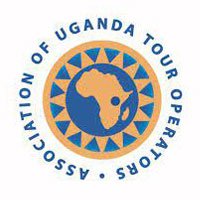Celebrating the Uganda Martyrs: Between 31st January 1885 and 27th January 1887, Uganda and more specifically the Buganda Kingdom went through a time of turmoil following the struggle of three religious factions for political prominence in the Buganda Kingdom.

People celebrating the Uganda Martyrs Day
In a bid to regain control of his kingdom, the king of Buganda Kabaka Mwanga II sent an ultimatum for his subjects to choose between following the new Christian religion or solely follow the traditional norm and/or his orders. Those who decided against him were sentenced to death.
This was through the period when European countries were partitioning Africa, a period known as the ‘Scramble for Africa’. The period was characterized by colonization, annexation, invasion and division of the Dark Continent whilst spreading their agendas and religion to the indigenous people.
Prior to this, in 1875, publication in Britain of a letter purporting to be from the then King of Buganda Muteesa I to send missionaries to the country.
In 1877, Buganda was already housing the Anglican Church Missionary Society, the French Catholic White Fathers and the Islam Arab traders from Zanzibar all who wanted to be in control of the kingdom. This led to many locals being converted to either of the three religious beliefs and mostly into Christianity.
The new Christian and Islamic religions were widely received by the local people. However, this came with new ways of living and beliefs that they had to adhere to – most of which rendered the traditional ways ‘satanic’. The converts, therefore, had to denounce their old beliefs and take up new ones, for example, calling Jesus the ‘King of kings’, something that the then traditional kings found disrespectful and disloyal.
The successor of Muteesa I, kabaka Mwanga II was not particularly pro foreign faith influence and soon after becoming king, he executed some of the chiefs that had converted to Christianity like Makko Kakumba, Yusufu Rugarama and Nuwa Serwanga in fear of the influence the new faith was taking over his precious kingdom.
In October 1885, on his orders, James Hannington, the Anglican Bishop was murdered on his way to Buganda kingdom coming through Busoga region. With the King possessing the power of life and death over his subjects and the ambitious and intolerant King, there were a lot of other assassinations and executions of converts including some of his own pages in the royal court who are said to have refused to obey his orders, sexual advances and entertaining the notion of the Christian faith as preached by the highly admired and strong believer – Joseph Mukasa.
Mukasa was a strong believer in the Christian faith and constantly spread the word to the subjects and pages of Kabaka Mwanga converting them one by one. This was not taken well by the King and eventually led to Mukasa’s beheading as an example to others who were against him.
Consequently, Charles Lwanga took up his (Mukasa) place as a spiritual leader for the pages and constantly tried to protect the young converts against the King’s sexual advances. As time went on the pages started to avoid or outrightly refuse the King’s demands, something that immensely angered the king.
Out of all the pages, one of them Muwafi is said to have been submissive and an obvious favourite of the King, which sparked a massacre once he found one of the other pages teaching his favourite page about the Christian faith.
Following this incident, Kabaka Mwanga II feeling betrayed called a meeting to identify which of the pages had been converted and those that still followed his rules. 22 young men including a 14-year-old Kizito were sentenced to death by being burned alive at Namugongo.
This, however, did not work in his favour. In the attempt to stop the spread of the Christian faith, this killing and the show of strong faith by these young men led to widespread of Christianity.
It was considered the seed of Christianity in Uganda leading to the declaration of the martyrs ‘Blessed’ by Pope Benedict XV in 1920. The Uganda Martyrs were later canonized in 1964 as saints.
The Martyrs were further honoured by Pope Paul VI who was the first Pope to visit Uganda when he came in 1969 and visited the site and dedicated it for building a shrine Church in honour of the martyrs. Since then Uganda has been visited a lot by the various Popes – who have of course made the stop at Namugonggo
Every 3rd June, to honour the 22 martyrs it is marked on the worldwide church calendar and celebrated in Uganda as a public holiday.
Here is a list of the Catholic martyrs that were burned alive on June 3rd.
- Achilleus Kiwanuka
- Adolphus Ludigo-Mukasa
- Ambrosius Kibuuka
- Anatoli Kiriggwajjo
- Andrew Kaggwa
- Antanansio Bazzekuketta
- Bruno Sserunkuuma
- Charles Lwanga
- Denis Ssebuggwawo Wasswa
- Gonzaga Gonza
- Gyavira Musoke
- James Buuzaabalyaawo
- John Maria Muzeeyi
- Joseph Mukasa
- Kizito
- Lukka Baanabakintu
- Matiya Mulumba
- Mbaga Tuzinde
- Mugagga Lubowa
- Mukasa Kiriwawanvu
- Nowa Mawaggali
- Ponsiano Ngondwe
While Martyr’s day celebrations are held as a public holiday that gathers faithful from all over the worlds, Namugongo and the other Uganda martyrs shrines can be visited at any time of the year. In a move to diversify Uganda’s tourism sector, a lot of work has been done to promote such spiritual and historical places as the Uganda martyrs shrine.
You can visit Namugongo and other Historical & religious sites on day tour of Kampala. The tour can be customized to your requirement – so that you can enjoy the most of your time.








